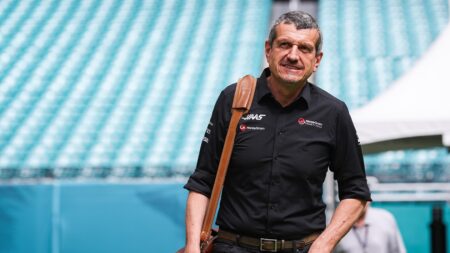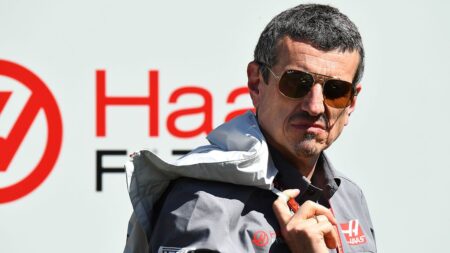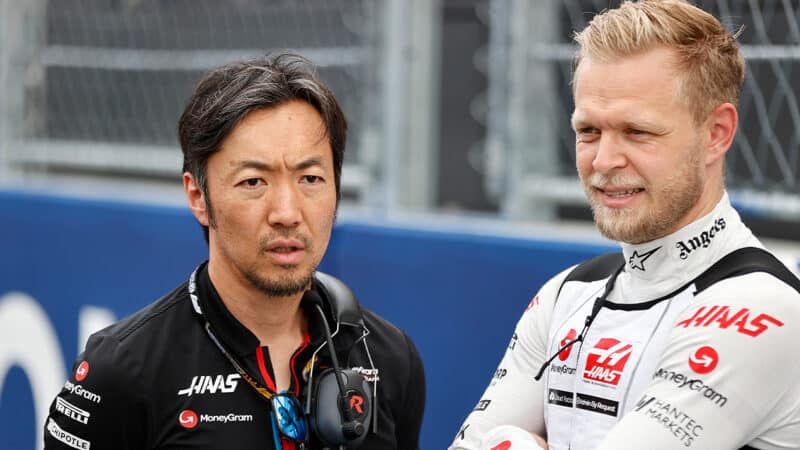And trying to attract staff by way of the small warehouse with limited parking wedged between a kitchen workshop and living solutions company, is far from easy.
The man tasked with that job for the past decade was unceremoniously replaced between Christmas and New Year, with team owner Gene Haas opting for Ayao Komatsu as Guenther Steiner’s replacement. And the Japanese engineer is very much aware of the challenges faced by the current Haas structure.
“Of course, if you’re setting up on a blank sheet of paper, you’re not going to set up an F1 team with two separate factories in the UK and Italy, but that’s how we started and that was very beneficial in ’16, ’17, ’18 to get off the ground,” Komatsu says. “Then of course the landscape changes, certain regulation changes happen, so the team needs to develop.
“Those kind of things we need to assess continuously. But again, if you ask me is that ideal, having a UK office here and an Italy office there? No. But is that a main constraint? No. Can we do better? Absolutely yes. So that’s what I’m focused on.
“If we get the maximum out of how we set up, and then if that becomes right, we [therefore] cannot do anything better with the way we set up [and] then we can talk about that. That’s my strategy, if you like. But of course you’ve got to have that, not in the back of your mind, but as a strategy medium, long-term where you might want to go. But that’s not my focus at the minute.”
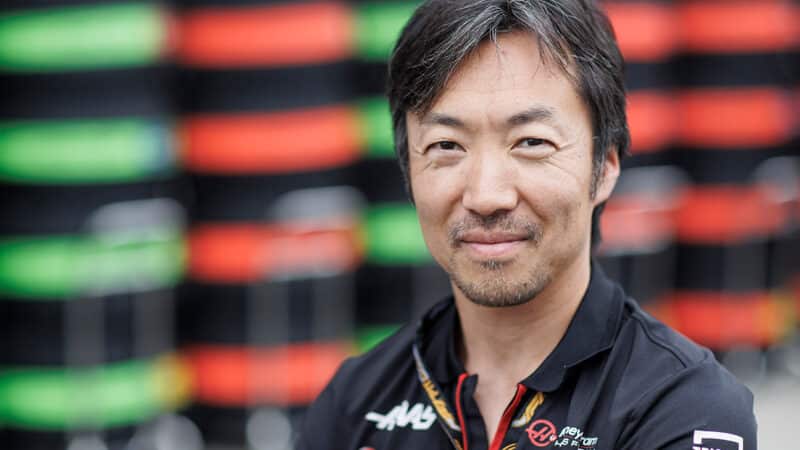
Will Komatsu be the answer to Haas’s problems?
Haas
Komatsu flies to Italy today (Wednesday) to visit Haas employees in Europe and understand where they feel there have been issues in the past. It’s an admirable approach that he wouldn’t speak too sweepingly about changes or a different structure until he was aware of how each different location sees things, but it all simply underlines the enormous issues that Gene Haas appears to be ignoring.
When he spoke last week, the team owner stated that he is no longer interested in being “humiliated every weekend” by finishing last, and that he can’t comprehend why the team is in that position.
“It’s really all about winning,” Haas added. “We have a great team, we have great engines, we have really great drivers. There’s no reason why we are 10th. I can’t understand how we can be with all the equipment and people we have.”
It’s about the other nine teams, Gene.
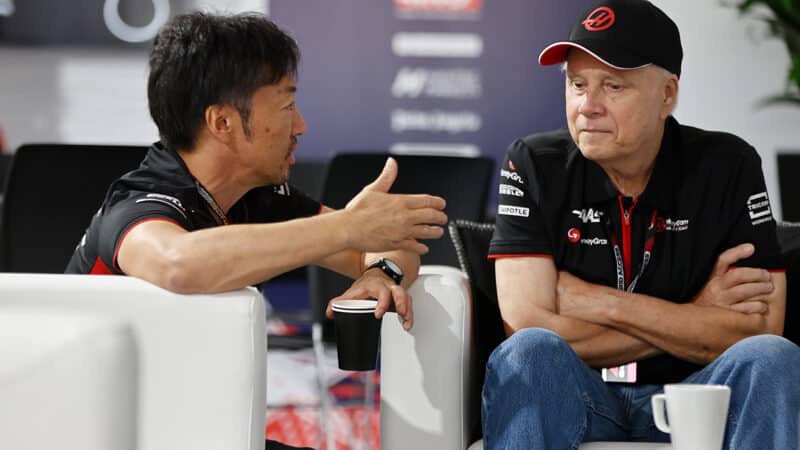
Komatsu (left) could face an uphill battle in changing the mind of Haas (right) in order to push the team forward
Haas
When Haas entered in 2016, as Komatsu points out, the model worked to get the team up and running and quickly competitive. But F1 is almost unrecognisable compared to 2016, when Sauber and Force India were on the brink — the latter disappearing and being taken over — and Williams was also severely under-resourced despite developing a strong car for those regulations.
Renault had only just repurchased Lotus and had a huge amount of rebuilding work to do, while McLaren-Honda was a mess. Five teams ripe for the taking, and Haas took advantage at certain times.
Now, all of those teams are facing immensely different futures. Sauber will become Audi in two years’ time, Aston Martin’s investments and new facilities are hugely impressive, Williams is attracting big names under ambitious ownership and funding, and McLaren has very much got its act together having expanded its design team and capabilities.

